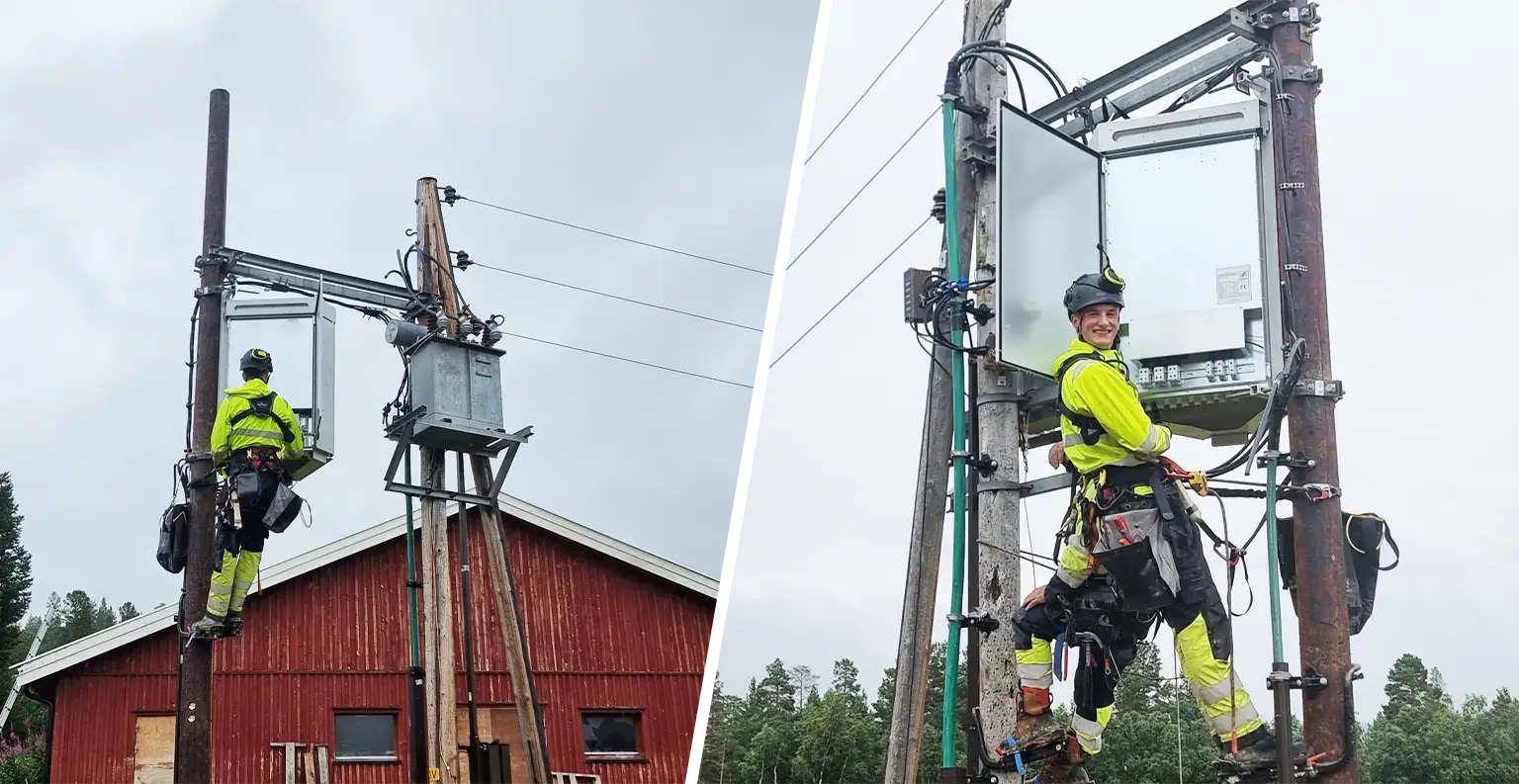Røros E-verk Trials Three Alternatives for Even Voltage
Less than 1% of Røros’ grid customers have private solar cells. Despite this low percentage, Røros E-verk has experienced that households with solar cell systems often create disturbances and difficulties in keeping the voltage level even and within the Norwegian FOL limits. To combat this challenge, Røros E-verk has trialed various solutions.

Lars Hofstad is Grid Manager at Røros E-verk. In his view, the grid company is responsible for making arrangements, allowing customers to safely implement solar cells.
— As grid owners we must be able to adapt to the solar cell customers, so they in turn can return the excess electricity they produce. Although the customers themselves are producing the electricity, the voltage level will always be our responsibility.
Hofstad has tested various solutions with a number of solar cell owners. The goal is to find a solution that is both cost-effective and maintains an even voltage.
If the voltage exceeds beyond ideal values, customers lose production in their solar cells and the grid company may be fined – a situation where no one wins.
The Three Alternatives
The owners of solar cells (also referred to as the “plus customers”) are located at various places on the grid. Some have their solar cells far away from the closest transformer, while others share a transformer circuit with several neighbors.
The needs vary significantly, which reflects the possible solutions available:
- Manual adjustment: Seasonal adjustments of the voltage level on the transformer.
- Voltage booster for each landowner: Magtech SVB Booster from Norsk Transformator.
- Automatic on-load tap-changer for neighbourhoods: Transformer from 22 kV – 240 V IT grid.
The first alternative is a manual adjustment that is done twice a year, without additional equipment or investments besides the time spent by the employees to carry out the adjustments.
Option 2: Voltage Booster at the Landowners’
Option two has been tested with a landowner who has a short distance to the nearest transformer. Because the transformer only supplies the landowner’s household and two nearby cabins, and the distance itself is short, Røros E-verk installed the Magtech voltage booster.
— We have good experience with the booster. It is so easy to install that about anyone could put it into operation. The booster does a great job in regulating the voltage; the disadvantage is the cost in relation to the number of customers it covers.
Option 3: Automatic On-Load Tap-Changers for Neighbourhoods
The last option is an automatic on-load tap-changer, also from Norsk Transformator, which is installed at a substation that covers nine customers – where one of these customers has solar cells installed.
The tap-changer has proven quite useful. Going forward, Røros E-verk will attempt an even smarter application using SafeMon.
— The tap-changer will be monitored through the SafeMon software. In practice, this means that I can check the voltage from my office chair, hit a button in SafeMon and adjust the transformer up or down – depending on whether the voltage is too high or too low, says Martin Nymoen, Operations Engineer at Røros E-verk.
All that remains before the tap-changer can be controlled through SafeMon is to install the SensorHub.
— SafeMon has functionality for remote control, we have previously done a project with Føie on this area of expertise, adds Frode Johansen in SafeBase.

